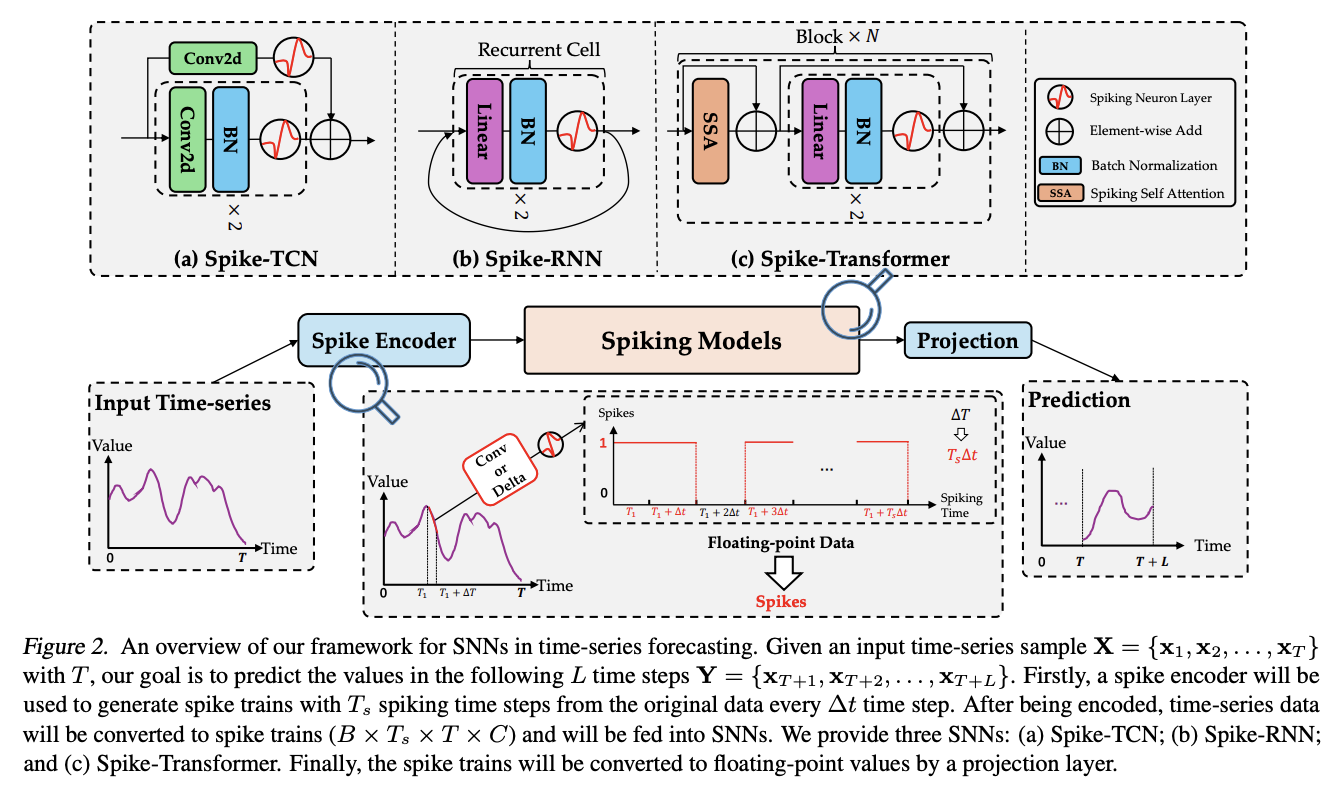

Spiking Neural Networks (SNNs), a family of artificial neural networks that mimic the spiking behavior of biological neurons, have been in discussion in recent times. These networks provide a fresh method for working with temporal data, identifying the complex relationships and patterns seen in sequences. Though they have great potential, using SNNs for time-series forecasting comes with a special set of difficulties that have prevented their widespread use.
In a variety of industries, including supply chain management, healthcare, finance, and climate modeling, time-series forecasting is essential. For this, traditional neural networks have been employed extensively, but they frequently fail to fully capture the temporal complexity of the data. SNNs offer a more effective means of processing temporal information because of their biologically inspired mechanisms. However, in order to realize their full potential, a number of issues need to be resolved, which are as follows.
- Efficient Temporal Alignment: One of the main obstacles to using SNNs for time-series forecasting is the intricacy of properly aligning temporal data. Because SNNs depend on exact spike timing, incoming data must be carefully aligned with the network’s temporal dynamics. Achieving this alignment can be challenging, particularly when dealing with irregular or noisy data, but it is essential for accurately modeling temporal connections.
- Difficulties in Encoding Procedures: Converting time-series data into an encoding format that works with SNNs is a very difficult task. SNNs operate with discrete spikes, in contrast to standard neural networks, which normally handle continuous inputs. Time-series data conversion into spikes that retain important temporal information is a challenging operation requiring advanced encoding techniques.
- Lack of Standardised Recommendations: The absence of standardized recommendations for model selection and training adds to the complexity of applying SNNs to time-series forecasting. Trial and error is a common method used by researchers, although it can result in less-than-ideal models and inconsistent outcomes. The use of SNNs in real-world forecasting applications has been restricted due to the lack of a well-defined framework for building and training them.
In recent research by Microsoft, a team of researchers has suggested a thorough methodology for using SNNs in time-series forecasting applications in response to these limitations. This paradigm provides a more biologically inspired approach to forecasting by utilizing the spiking neurons’ innate efficiency in processing temporal information.
The team ran several trials to assess how well their SNN-based techniques performed in comparison to different benchmarks. The outcomes showed that the suggested SNN approaches outperformed conventional time-series forecasting techniques by the same amount or better. These outcomes were attained with noticeably less energy usage, emphasizing one of the main benefits of SNNs.
The study examined the SNNs’ capacity to identify temporal connections in time-series data in addition to performance indicators. In order to evaluate how well the SNNs could simulate the complex dynamics of temporal sequences, the team carried out extensive analyses. The results showed that SNNs perform better than standard models at capturing subtle temporal patterns.
In conclusion, this study adds much to the growing body of knowledge on SNNs and provides insightful information about the advantages and disadvantages of using them for time-series forecasting. The suggested framework highlights the potential of biologically inspired methods in resolving challenging data issues and offers a path for creating more temporally aware forecasting models.
Check out the Paper and GitHub. All credit for this research goes to the researchers of this project. Also, don’t forget to follow us on Twitter and LinkedIn. Join our Telegram Channel. If you like our work, you will love our newsletter..
Don’t Forget to join our 50k+ ML SubReddit
The post Microsoft Research Suggests Energy-Efficient Time-Series Forecasting with Spiking Neural Networks appeared first on MarkTechPost.